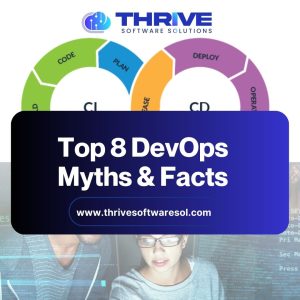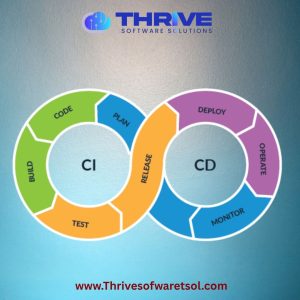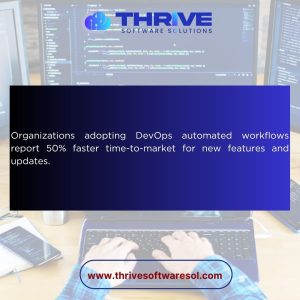Automation in DevOps has evolved from isolated scripts to end-to-end orchestration that accelerates delivery, improves reliability, and strengthens compliance across complex estates. By standardizing workflows across build, test, release, and operations, DevOps automation turns fragile handoffs into predictable, governed pipelines.
Learn more about DevOps Myths and Facts
What changed
The shift from ad hoc scripts to orchestrated workflows reflects rising system complexity, multi-service architectures, and the need for traceable, policy-driven releases at scale. Automation in DevOps now spans version control hooks, CI/CD stages, infrastructure provisioning, runtime configuration, and incident response, all linked by shared policies and observability.
Scripts vs. orchestration
Scripts automate discrete, repeatable tasks—compile code, run tests, provision a VM, rotate a secret—but they struggle with cross-team consistency, error handling, and rollback when stitched together informally. Orchestration coordinates those automated tasks into an end-to-end flow with explicit dependencies, approvals, gates, and feedback loops that align engineering, security, and operations. Automation in DevOps matures when scripts become reusable components governed by workflows, not tribal knowledge.
Why orchestration matters
Orchestration makes delivery resilient: it enforces order of operations, parallelizes safe tasks, aggregates evidence, and halts at policy gates when risk rises. It also converts compliance from a late checkpoint to a built-in control, producing continuous evidence while releases move faster. Automation in DevOps therefore reduces change failure rate and time to restore while increasing deployment frequency—improving both business agility and operational safety.
Core pillars
- Infrastructure as Code: Declarative, testable environments (cloud, containers, networking) that are versioned and promoted like application code.
- CI/CD pipelines: Event-driven, multi-stage flows that validate changes, package artifacts, run quality and security checks, and promote with traceable approvals.
- Policy as code: Guardrails for security, cost, and compliance (e.g., signature verification, SBOM checks, cost limits) enforced at merge and deploy time.
- Observability: Unified logs, metrics, traces, and SLOs feeding automated gates, anomaly detection, and rollback logic.
- Secrets and identity: Centralized secrets, workload identity, and least-privilege policies embedded in every stage of the workflow.
- Change and incident integration: Automated change records, release notes, and runbooks that connect to incident response and post-incident learning. Automation in DevOps works best when these pillars operate as one system of delivery.
Maturity path
- Task automation: Teams use scripts and playbooks to remove toil in builds, tests, deployments, and provisioning, but results vary across services.
- Pipeline standardization: Common CI/CD templates, shared stages for testing and security, and consistent artifact promotion across environments.
- Orchestrated delivery: Cross-domain workflows link code, infra, security, compliance, and change management with automated evidence and approvals. Automation in DevOps at this stage adds topology awareness and blast-radius controls.
- Autonomous remediation: Safe, policy-bound runbooks handle routine incidents (scale, restart, feature-flag fallback) with humans focused on design and systemic improvements.
Measurable outcomes
Orchestration should move the four canonical flow metrics in the right direction: shorter lead time for changes, higher deployment frequency, lower change failure rate, and faster mean time to restore. Additional business KPIs—cost to serve, cloud spend per transaction, and NPS—benefit as reliability and velocity improve. Automation in DevOps aligns these outcomes by ensuring every release is both faster and better evidenced.
Common pitfalls
- Pipeline sprawl: Too many unique pipelines slow governance and create brittle silos; standardize templates and golden paths.
- Silent failures: Scripts without robust error handling, timeouts, and idempotency degrade confidence and inflate recovery time. Automation in DevOps requires explicit contracts for inputs, outputs, and retries.
- Security last: Deferring security and compliance to manual gates late in the process creates rework; embed checks and evidence early and continuously.
- Tool-first thinking: Buying platforms without aligning to value-stream bottlenecks adds cost and complexity; start with outcomes and constraints.
Implementation blueprint (90 days)
- Days 0–30: Baseline DORA metrics, map the value stream for one product, and consolidate ad hoc scripts into version-controlled modules with tests and idempotency. Introduce foundational pipeline templates with unit, integration, and SCA checks.
- Days 31–60: Add policy-as-code (signing, SBOM, image/infra scanning), progressive delivery (canary, blue/green), and standardized release evidence. Automation in DevOps at this stage integrates change records and automated rollbacks tied to SLO error budgets.
- Days 61–90: Expand orchestration to include infra drift detection, ephemeral environments for PRs, and automated incident runbooks for common failure modes. Publish results, refine golden paths, and plan scale-out to adjacent value streams.
Architecture patterns
- Git-centered delivery: Everything begins with a change; pipelines treat Git as the source of truth for app code, infra, policies, and documentation.
- Declarative promotion: Only signed, immutable artifacts flow forward; promotions change references, not binaries, enabling deterministic rollbacks.
- Environment parity: Reusable modules define consistent environments; ephemeral previews prevent staging bottlenecks and reduce last-mile surprises.
- Progressive rollout: Feature flags, canaries, and automated health checks bound risk and enable safe, frequent releases. Automation in DevOps thrives on rapid feedback with safe controls.
Tooling categories
- Version control and PR automation for consistent workflows and code reviews.
- CI engines for build and test; CD controllers for progressive delivery and rollbacks.
- IaC and configuration automation for reproducible environments and services.
- Secret management and signing for artifact integrity and runtime safety.
- Policy-as-code and admission controls to enforce rules before deploy. Automation in DevOps is less about specific brands and more about disciplined categories working together.
Security and compliance by design
Bake in least privilege, signed artifacts, verified provenance, and vulnerability budgets as first-class pipeline requirements. Treat threats as defects in the same backlog with time-bound remediation policies and automated attestations. Automation in DevOps shifts compliance from paperwork to continuous, demonstrable controls.
Reliability and cost control
Orchestrated feedback loops tie SLOs to deployment gates and rollbacks, reducing incident volume and time to restore service. FinOps checks enforce budget constraints pre-deploy and optimize cloud usage post-deploy without human intervention. Automation in DevOps therefore improves both reliability and cost-to-serve in measurable ways.
Executive takeaway
The journey from scripts to orchestration is a shift from local optimizations to system-level performance—governed, observable, and resilient by default. Organizations that standardize workflows, codify policy, and automate evidence convert delivery speed into a durable competitive advantage. Automation in DevOps is the operating system of modern software delivery, turning complexity into controlled flow. If you are looking for a trusted DevOps automation solutions provider in WA, USA, reach Thrive Software Solutions for an expert consultation.






